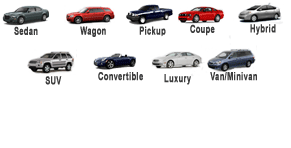![]()


![]()


|
|||||||||||||||
|
At the beginning of the automotive age, all cars were convertibles. Like the carriages from which they descended, they were basically open vehicles. If they had tops at all, the tops were made of folding cloth to offer some protection from the elements to passengers in bad weather. In 1910, Cadillac introduced the first closed-roof car, but convertibles continued to be popular for their open-air driving experience and often sportier nature.
Proposed U.S. Government safety regulations in the 1970s nearly saw the demise of the convertible here, and in fact the 1976 Cadillac Eldorado was touted to be "the last convertible in America". Rumors of the genre's demise were, however, premature. Changes in construction and additional safety equipment including extra-strong windshield frames and pop-up roll bars behind the seats allowed convertibles to meet all safety standards. On the endangered species list through the 1980s, convertibles came back in a strong way in the 1990s and continue to gain in popularity today. Chrysler Sebring Convertible. TheMazda MX-5 Miata takes the honors in the two-seat category. Convertibles are also available from Audi, BMW, Honda, Mercedes-Benz, Cadillac, Chevrolet, Ford, Pontiac, Nissan, Lotus, and other manufacturers.There are a number of sub-genres of convertible, and today use of those names is more to marketing whim than anything else. Four-seat convertibles are more likely to be called cabriolets in Europe. "Phaeton" was a term, derived from horse-drawn carriages, commonly used in the early 20th Century, but now discarded. "Roadster" and "Spyder" have been used for two-seaters, as has "Barchetta", in Italy at least. When cars were commonly made with body-on frame construction, making a convertible version of a sedan was fairly simple. Little more than replacement of the metal top with a convertible one was necessary, as the body was not structural. Even then, though, four-seater convertibles usually had two, not four, doors for better rigidity. With modern unit construction, the top is a vital structural component. When it is removed, extra reinforcement of the lower section of the car is necessary. Because of this, convertibles often weigh more than their sedan or coupe counterparts. In the beginning, all convertible tops were sturdy canvas cloth. Later cloth-backed vinyl became an alternative. Rear windows (backlights) were originally plastic, which quickly became translucent and impaired visibility. When better top-stowage mechanisms, and stronger glass, became available, glass backlights became more common, and are now universal. The most recent development in convertible technology is the folding and disappearing metal top. Although the concept debuted in the Chrysler Thunderbolt show car in 1941, and reached production in 1957 in the Ford Skyliner, it was the Mercedes-Benz SLK, first released in 1997, that paved the way toward extinction of the cloth top. Now most premium convertibles have folding metal tops. |
|||||||||||||||
|
|
|||||||||||||||
Send your questions, comments and suggestions to: Editor-in-Chief@theautochannel.com
To report errors and other problems with this page, please use this form